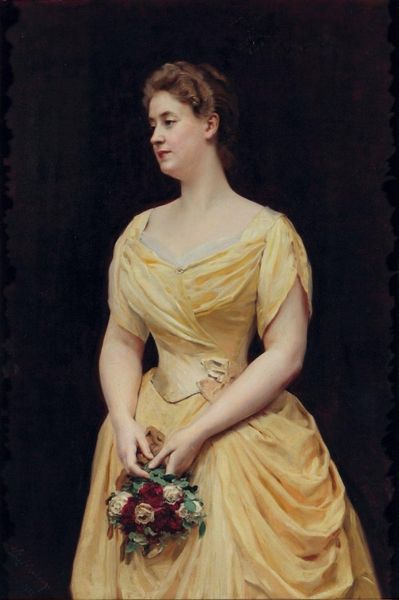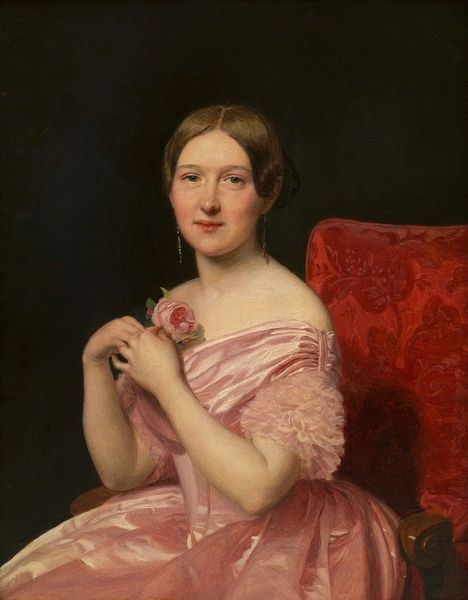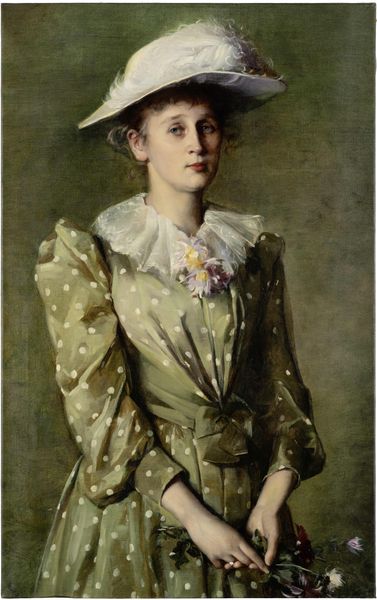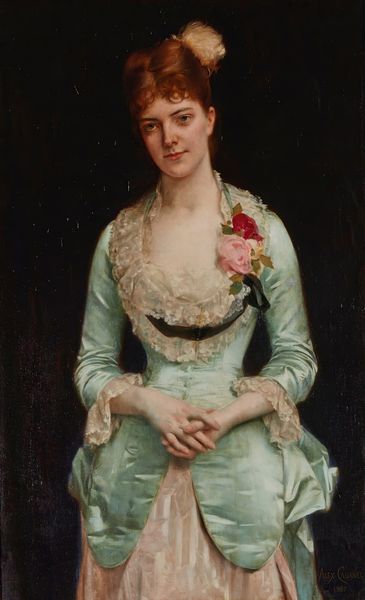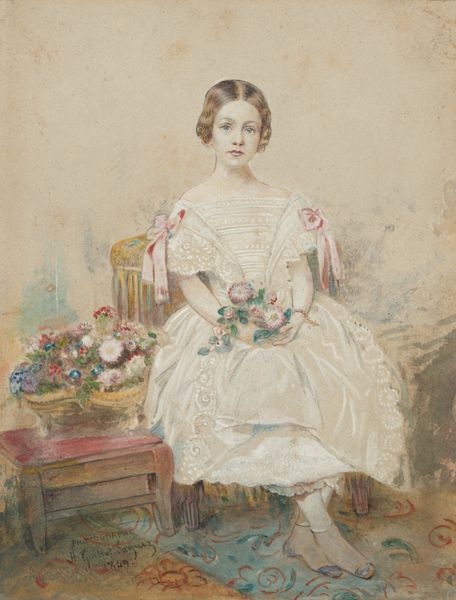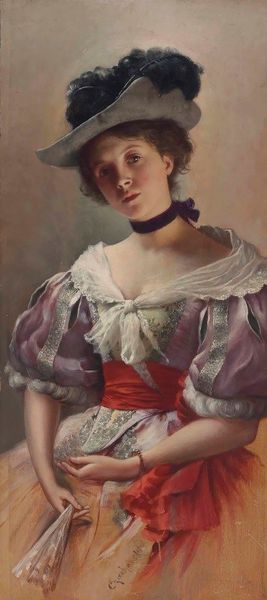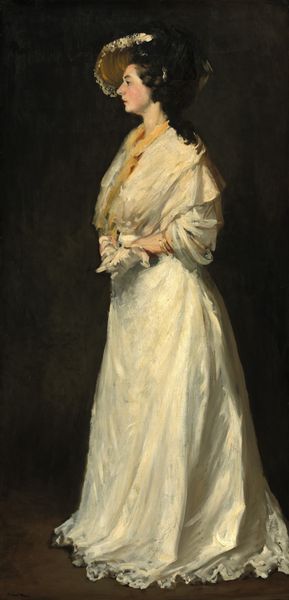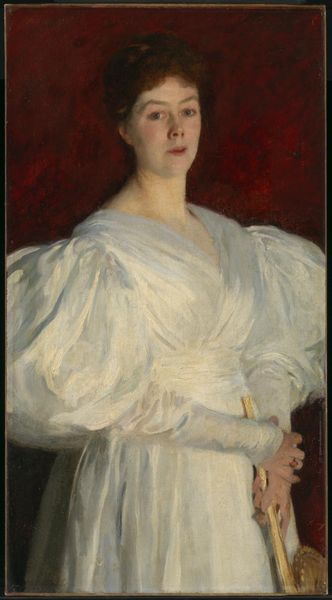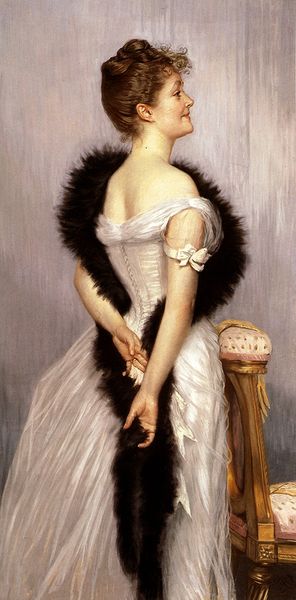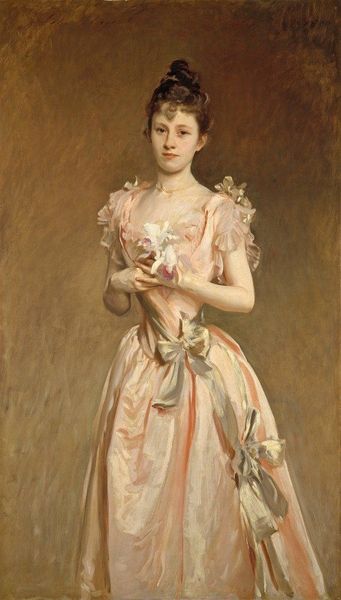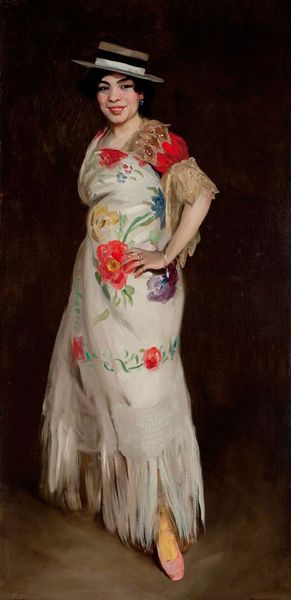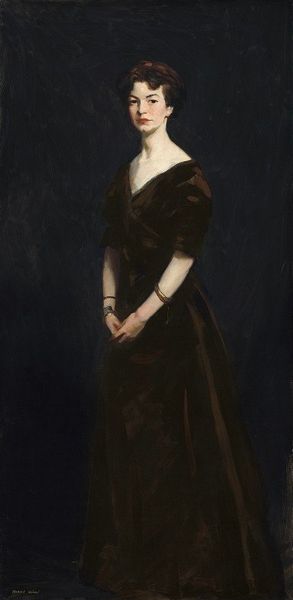
Dimensions: 43 9/16 x 25 3/8 in. (110.65 x 64.45 cm) (sight)57 3/8 x 39 1/4 x 4 in. (145.73 x 99.7 x 10.16 cm) (outer frame)44 x 26 in. (111.76 x 66.04 cm) (canvas)
Copyright: Public Domain
Curator: This is George Chickering Munzig’s "Portrait of a Young Girl," painted in 1881. Editor: It strikes me as quite formal, even reserved. The cool backdrop emphasizes the girl's pale skin and the muted yellow of her dress. It gives off an air of quiet contemplation, almost melancholic. Curator: Munzig's technique reveals much about the art world of his time. Working primarily with oil paint on canvas, Munzig uses layered glazes to achieve a smooth, porcelain-like finish. We can trace the materiality of his artistic production back to an era enamored with classical ideals. Editor: Absolutely, and considering its creation in 1881, what strikes me is how it positions the female subject within specific social parameters. Note the girl’s modest attire and posture; her clasped hands signify decorum, which were considered essential virtues for young women. The very act of commissioning such a portrait speaks volumes about bourgeois aspirations, a means of conveying respectability. Curator: Precisely, if we consider Munzig's position within the late 19th-century American art scene, a pivotal tension comes into focus. Artists often grappled with emulating European academic styles versus forging a distinctly American identity. The materials themselves tell a story; from where was the pigment sourced? Who produced the canvas? These are crucial questions when understanding the artistic ecosystem. Editor: And doesn't that attention to the material world mirror the cultural obsession of the time? Industrial production led to increasing consumption, reflected here in the delicate layers of lace and silk, markers of her family’s wealth and social standing. She represents a certain idealized vision of femininity—passive, innocent, and ornamental. We can almost feel the weight of societal expectations placed upon her. Curator: I agree; the material choices are integral to constructing the very image she projects. Thinking about it, one cannot separate the availability of these luxury goods from the exploitation of labor inherent in their production. The history of the raw materials themselves carries these implicit colonial stories of extraction. Editor: Looking at her now, I'm reminded how much portraiture serves as a constructed narrative rather than objective representation, an assertion of identity intertwined with power structures and cultural expectations. Curator: Examining his choice of medium, along with its construction and what she represents to society, allows us a fascinating portal into the societal structure of late 19th century America. Editor: It truly opens up a deeper understanding of not only the artistic intention, but of the world it both reflected and reinforced.
Comments
No comments
Be the first to comment and join the conversation on the ultimate creative platform.
